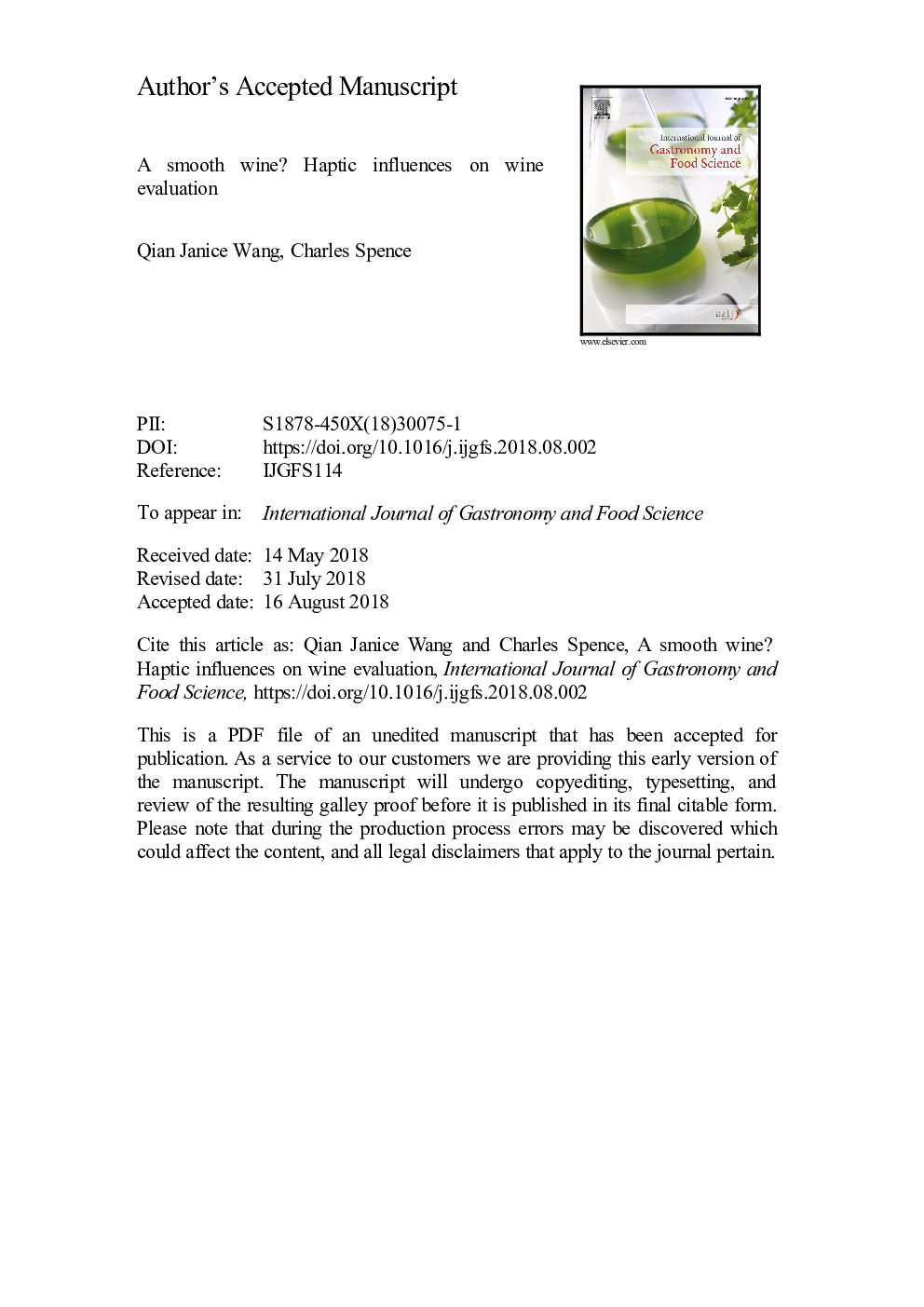| Article ID | Journal | Published Year | Pages | File Type |
|---|---|---|---|---|
| 8954734 | International Journal of Gastronomy and Food Science | 2018 | 18 Pages |
Abstract
Although product-extrinsic touch is often overlooked as far as flavour perception is concerned, recent research unequivocally demonstrates that the perceived flavour and hedonic evaluation of foods and drinks can be modulated by the surface texture of packaging materials and servingware (as well, of course, as by the oral-somatosensory texture of the food and drink itself). The present study was designed to assess the impact of touching markedly different surface textures on the wine-tasting experience, both in terms of orthonasal olfaction as well as for in-mouth sensations. A preliminary study conducted at a science and wine symposium confirmed that touching velvet, as opposed to sandpaper, enhanced the perceived sweetness of an off-dry white wine. In the main study, participants (Nâ¯=â¯60) evaluated a red dessert wine whilst simultaneously touching either a swatch of velvet or sandpaper with their dominant hand. The participants first smelled the wine while touching each material. They rated the aroma of the wine in terms of its intensity, acidity, fruitiness, and pleasantness. Next, the participants tasted the wine while stroking each material. The wine was rated in terms of its acidity, sweetness, tannin level, and pleasantness. Overall, the aroma of the wine was judged to be significantly fruitier when participants simultaneously touched the velvet rather than the sandpaper. When it came to tasting, the wine was rated as significantly sweeter and more pleasant when the participants touched the velvet rather than the sandpaper. These results imply that product-extrinsic surface textures can influence not only the in-mouth flavour experience, but also orthonasal olfactory evaluations as well. One explanation for the tactile influence on smell, taste, and liking may be due to the hedonic mapping between stimuli. These results could have important implications for the hospitality industry, e.g., when thinking about innovative coatings for new drinking receptacles or beverage packaging.
Related Topics
Life Sciences
Agricultural and Biological Sciences
Agricultural and Biological Sciences (General)
Authors
Qian Janice Wang, Charles Spence,
